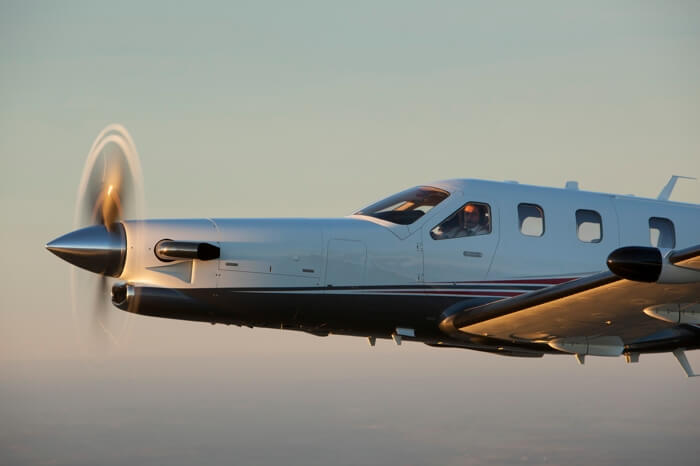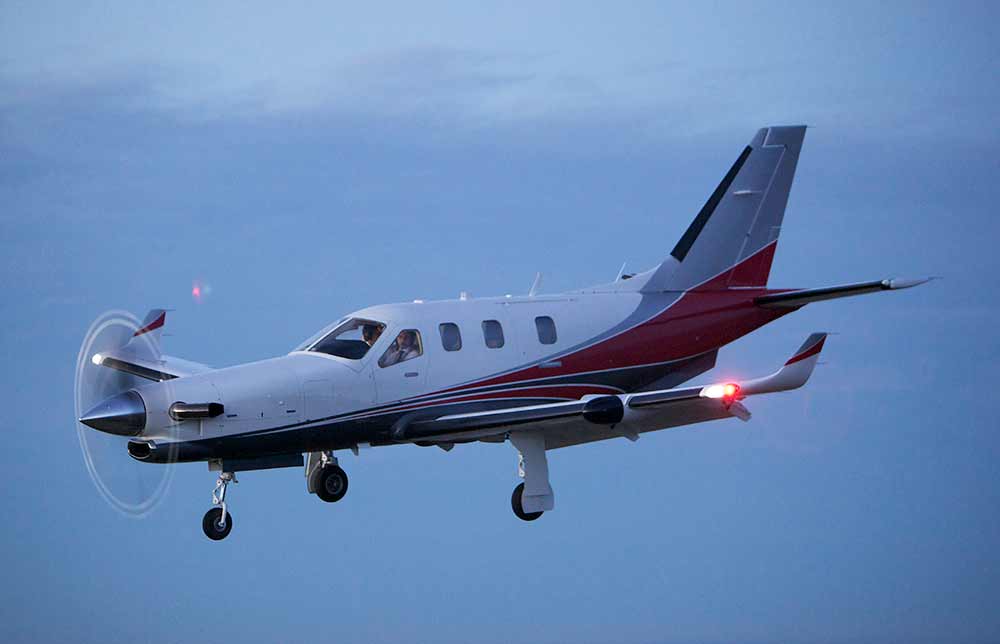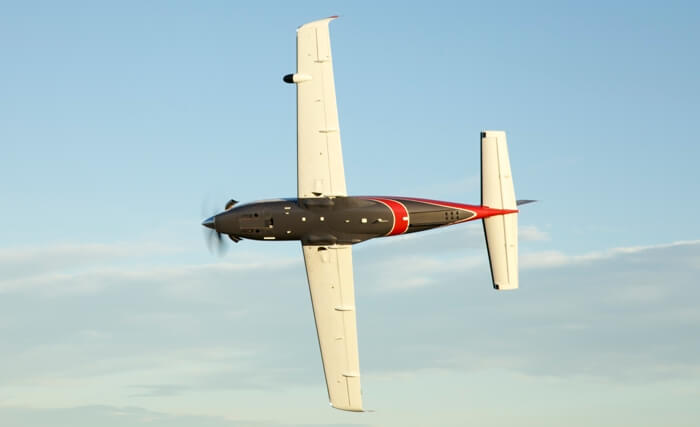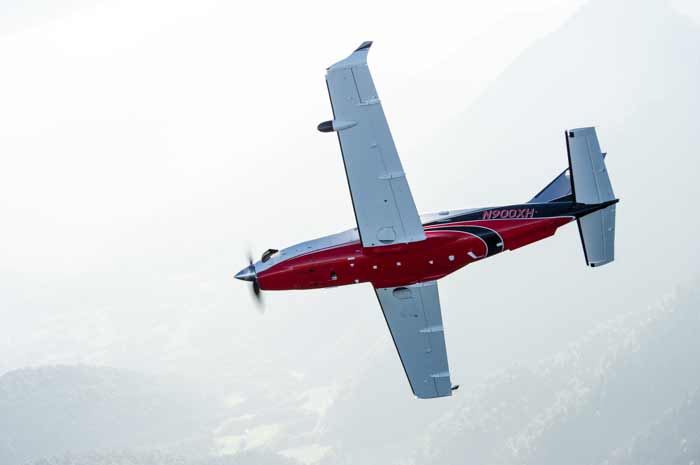TBM 700A/B/C2, TBM850, TBM900/910/930/940
Our initial transition training for the Daher TBM Series (700A through 940) is an FAA FITS formatted program. It is designed to bring you up to speed on your aircraft, its systems, operations, procedures, and handling characteristics in an organized, thorough and efficient manner. The program relies upon highly experienced and skilled instructors, a thorough, self- directed pre-work process followed by a series of full emersion, one-on-one sessions involving both classroom and actual flight training, in your own airplane, logging real, actual flight time. The process is tailored to you, your background, your learning style and on your schedule. When you complete our program you will be proficient in VFR and IFR conditions, able to handle normal, abnormal and emergency scenarios to PTS standards established for your pilot certificate.
Because you bring a unique set of experiences and knowledge to the initial training process, it is flexible, and seeks to build on your prior experiences, while setting the proper framework for the safe operation in this highly advanced, incredible high- performance aircraft. The goal of transition training is to provide you with the knowledge, skill, and self-confidence to begin flying your new Daher TBM turboprop so you can take full advantage of all its unique capabilities and characteristics.
Formal training consists of a series of organized lessons starting with a review of the pre-work to ensure an adequate working knowledge of the basics. From there, each lesson builds on the prior one. Through this series of training scenarios you are introduced to all of your TBM, its performance characteristics, each of the normal, abnormal and emergency procedures, as well as the various servicing and handling procedures for the TBM. As the lessons progress, you will transition from learning to performing and ultimately to demonstrating competence. The course is designed for an experienced multi engine pilot holding at least a Private Pilot Certificate with an Instrument rating with who has 500 to 1500 hours of overall experience, has at least 100 hours of multi engine time and who has flow 100 or more hours in the previous 12 months. It also assumes at least a working knowledge of the basic aircraft instrumentation package including Auto Pilot, Flight Director, EFIS, HSI or EHSI, FMS, GPS, Moving Maps, MFD and so forth. Each course will be tailored to the specifics of your aircraft. Should your requirements include transition to "glass" due to limited or no prior EFIS/FMS experience, the course will be tailored to include that training and additional time will most likely be required. Once you are registered for the course, you will be given access to the online trianing materials for the TBM. This consists of approximately 20 hours of study materials, an electronic training manual, access to a variety of reference sources including pdf versions of the various TBM POHs based on the specific model (700/700C/850/900/930) along with a pre-training open book test. The self study and test are to be completed prior to starting the one-on-one flight training with your instructor, That test will be reviewed at the beginning of the flight training. Once the study materials have been reviewed, questions and answers clarified, it is time to start focusing on the process of flying the airplane. The plan is straight forward and designed to create a solid foundation then build from there. You will progress from basics with normal VFR and IFR flight conditions through the more advanced things including abnormal and emergency scenarios. After completing the briefing, flight preparations and planning process, these scenarios are designed to introduce you to the basic procedures from weight and balance to pre-flight inspection, engine start, taxi, run-up and so forth. During this session you will practice the application of all the normal procedures for operating your aircraft over the course of three individuals VFR flights at various altitudes. Each flight segment will provide the opportunity to become familiar with the aircraft handling characteristics and begin introducing you to its systems as you are shown how to operate them and then practice doing so. This set of flights focuses on transitioning from VFR to IFR flight including planning both on the ground and airborne. You will practice utilizing the avionics, the flight management, the information systems as well as the flight automation systems. These scenarios are designed to complete your introduction to the aircraft systems and normal procedures, giving you the opportunity for hands on practice over the course of three flights at various altitudes with cruise time of approximately 1 hour each. ABNORMAL PROCEDURES: These scenarios will introduce abnormal procedures in which you will experience a variety of system malfunctions and failures. Each failure will be discussed during the pre-flight briefing along with appropriate responses and then be introduced to you during the course of the day's flying. While each flight will be a cross country IFR flight at typical cruise altitudes, time will be taken between each leg to review the experience of the previous leg and set the stage for the next one. EMERGENCY PROCEDURES: This lesson will start with a review of abnormal procedures then move into emergency procedures. All flights will start as cross country missions incorporating situations that have historically lead to issues. These scenarios will provide the opportunity to practice and adhere to all of the major emergency procedures established for your TBM. As with previous sessions, each flight will be briefed including what will happen, how to respond to it and you will be expected to discuss the appropriate responses to each situation on the ground as well as follow those procedures with minimal coaching, in the air. PULLING IT ALL TOGETHER: The final lesson of the series, like all previous lessons will consist of three cross country flights built around realistic scenarios. Each scenario will be reviewed prior to the flight and you will be expected to complete the flight with little or no assistance from the instructor. The PT will plan the flight profile and perform all preflight procedures, engine start-up, avionics set-up, taxi and before-Take-off procedures. This is accomplished prior to Take-off for each leg of the flight. Runway incursions, ground operations, collision avoidance, abnormal indications, and corrective actions should be performed without assistance from your instructor. At this point, all decisions affecting the operation of these flights are to be made by you while employing appropriate aeronautical decision-making skills. Annual Pilot Proficiency Checks (or Recurrent Training) enables you to go back over the basics and to re-familiarize yourself with the procedures you don't use on a regular basis, if at all - namely abnormal and emergency procedures. The PC is an opportunity to delve into the unusual events that, thankfully, are not part of every day flying. For that very reason, it is important to review these processes and procedures. Flying is largely routine, until it isn't - and when it isn't normal, knowing what to do and how to do it becomes important very quickly. So, in addition to going through the normal VFR things like steep turns, slow flight, short field and cross wind takeoff and landings, we review and practice abnormal and emergency procedures. IFR procedures are also convered including abnormal and emergency scenarios for the same reasons. Additionally, we can conduct a portion of your PC at night should that be needed and/or desired. The PC is a learning and train to proficiency event which can be conducted all at one, annually, or spread out over time. Many of our clients prefer to get together every 3 or 4 months rather than annually. Our PROGRESSIVE program is designed to do just that. Call us for details. The FAA requirement for ongoing learning or continuous education can be satisfied through a number of options including attending safety seminars, adding a rating to your existing certificate, participating in online courses or by simply getting together with a certified flight instructor and going through a "BFR". Many pilots simply choose the "BFR" route and often this is accomplished in conjunction with some other training event such as an initial aircraft course. * Ground requirement is accomplished through any one of several means including interactive computer based training, directed video presentations or one on one classroom type discussions reviewing FAR’s, aviation safety and focusing on a pilot’s self identified areas of interest. Various online “wings” accredited programs can also satisfy the ground portions provided they are accomplished within a reasonable time frame. Flight training associated with the "BFR" is an opportunity to brush up on techniques, practice basic maneuvers such as slow flight and stall recovery along with emergency procedures. This is not a “check-ride” but rather a chance to reinforce basics, perhaps learn new techniques and expand your airmanship skill inventory. The length of time involved must be at least one hour of flight time. This is sometimes referred to as in Instrument Competency Check (ICC) in the insurance world. In short, it is an informal refresher for those pilots who don’t regularly log actual IMC and/or actual IFR approaches. It can also be used to get reacquainted with a specific instrument panel layout or become familiar with a new type of instrument such as an HSI/EHSI or a Flight Director system. Insurance companies occasionally require an ICC prior to issuing coverage to an IFR rated pilot purchasing an airplane. This is especially true when the new airplane has a more advanced cockpit with GPS systems, multi function displays and/or EFIS systems. Most commonly however, an ICC is used to simply restore IFR currency. Transition Training Course
Lesson Plan - Self Directed Pre Work
Lesson 1 - Day One - Focused on the foundational things

Lesson 2- Day Two -Moving into IFR and Flight Automation

Lesson 3 - Day Three - Handling the Unusuals

Lesson 4 - Day Four - Responding to Emergencies

Lesson 5 - Day Five - Demonstrating Proficiency
Recurrent Training Programs
TBM Videos
Flight Review & Instrument Competency Certification




